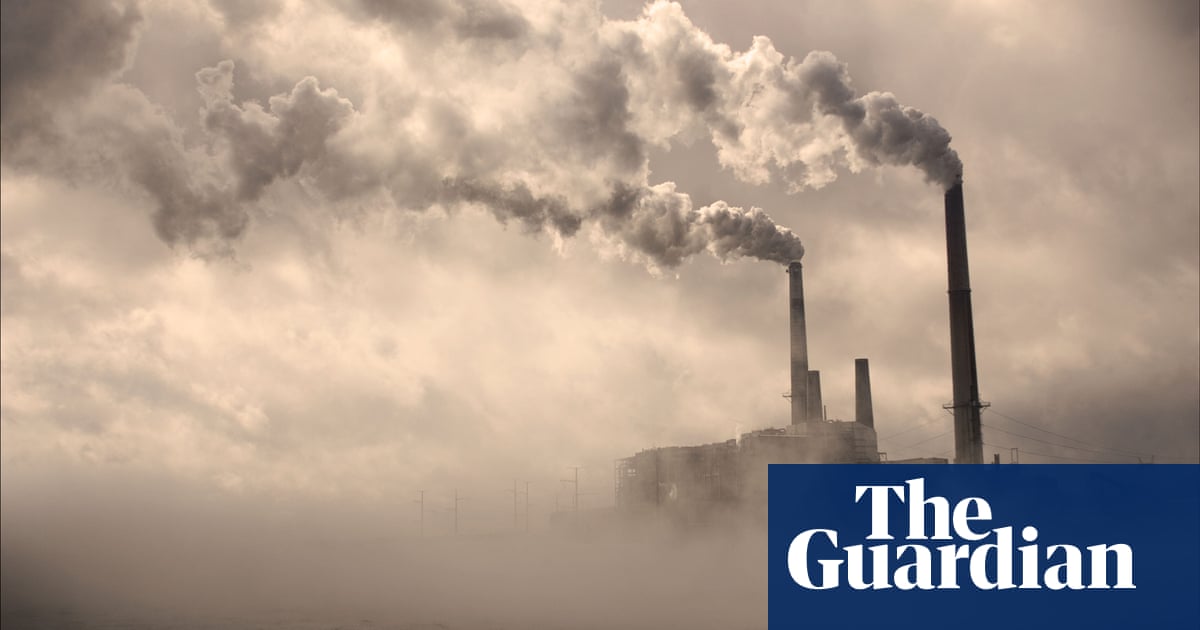
The Biden administration is proposing lower limits for a deadly air pollutant, saying tougher standards for soot from tailpipes, smokestacks and wildfires could prevent thousands of premature deaths a year.
A proposal released on Friday by the Environmental Protection Agency would set maximum levels of nine to 10 micrograms of fine particle pollution per cubic meter of air, down from 12 micrograms set a decade ago under the Obama administration. The standard for particle pollution, more commonly known as soot, was left unchanged by then president Donald Trump, who overrode a scientific recommendation for a lower standard in his final days in office.
In a development that could lead to an even lower standard, the EPA said it also would take comments on a range of ideas submitted by a scientific advisory committee, including a proposal that would lower the maximum standard for soot to eight micrograms. A microgram is one-millionth of a gram.
The EPA administrator, Michael Regan, said the proposal to strengthen the national ambient air quality standards for fine particle pollution would help prevent serious health problems, including asthma attacks, heart attacks and premature death that disproportionately affect vulnerable populations. Those populations include children, older adults and those with heart and lung conditions as well as low-income and minority communities throughout the United States.
“This administration is committed to working to ensure that all people, regardless of the color of their skin, the community they live in or the money in their pocket, have clean air to breathe, clean water to drink and the opportunity to lead a healthy life,’’ Regan said at a news conference. “At EPA, we are working every single day to create cleaner and healthier communities for all and have been doing so for over 50 years.’’
The EPA’s proposed rule, however, overlooks the recommendations of its clean air scientific advisory committee, which suggested a standard of eight micrograms per cubic meter for soot. The agency said it will listen to public comments on toughening the standard further to this level but the proposed rule disappointed clean air advocates.
“Current science shows that stronger limits are urgently needed,” said Harold Wimmer, president of the American Lung Association, who added that the new limit “falls far short of what is needed to meet the White House’s stated goals of furthering public health and environmental justice”.
“This draft rule misses the mark and does not adequately slash soot pollution, protect public health, or prevent premature deaths,” said Matthew Davis, a former EPA scientist who is now senior director of government affairs at the League of Conservation Voters.
“EPA has a massive opportunity to strengthen this standard and build a future with cleaner, healthier air for our children, especially for communities of color and low wealth communities disproportionately near polluting coal power plants, industrial facilities, truck depots and freight corridors.”
EPA scientists have estimated exposure at current limits causes the early deaths of thousands of Americans annually from heart disease and lung cancer as well as causing other health problems.
Dr Doris Browne, president of the National Medical Association, the oldest and largest national organization representing African American physicians, hailed the EPA’s proposal as “the bold action needed to protect public health across the country”.
Appearing with Regan at a news conference, Browne said the proposal is likely to have lasting benefits across the country “but especially for those communities of color and low-income communities that experience the increase in particulate matter pollution”. Smog, soot and other pollution near factories, power plants and other hazards has a “devastating impact on public health”, she said.
A 2022 report by the American Lung Association found that 63 million Americans live in counties that experience unhealthy daily spikes in soot pollution and 21 million live in counties that exceed annual limits for soot pollution. Most of those counties were in 11 western states, the report said. People of color were 61% more likely than white people to live in a county with unhealthy air quality, the report said.
Fresno, California, displaced Fairbanks, Alaska, as the metropolitan area with the worst short-term particle pollution, the report found, while Bakersfield, California, continued in the most-polluted slot for year-round particle pollution for the third year in a row.
The EPA will accept comments on the proposed rule through mid-March and will hold a virtual public hearing over several days. A final rule is expected this summer.











